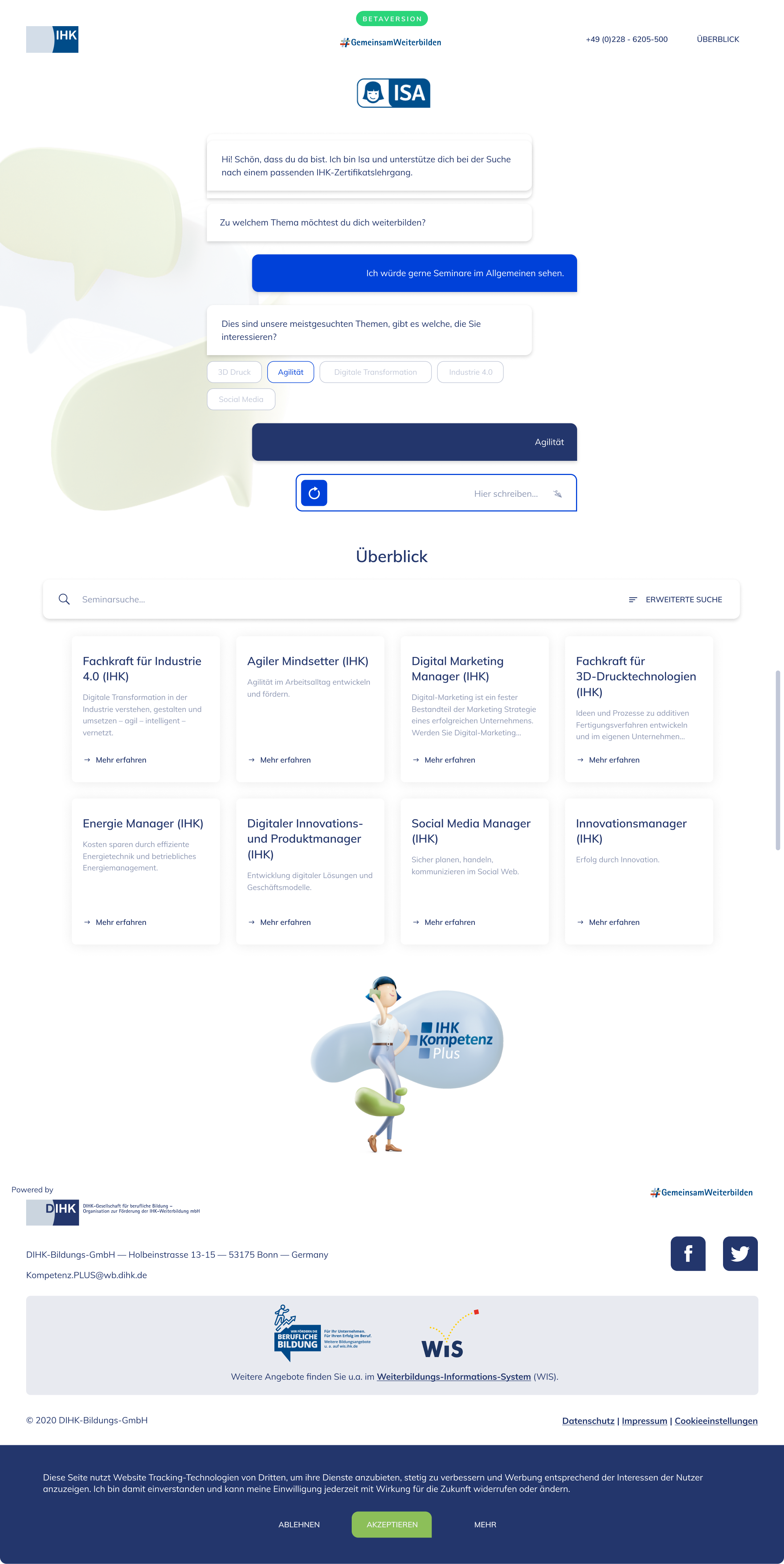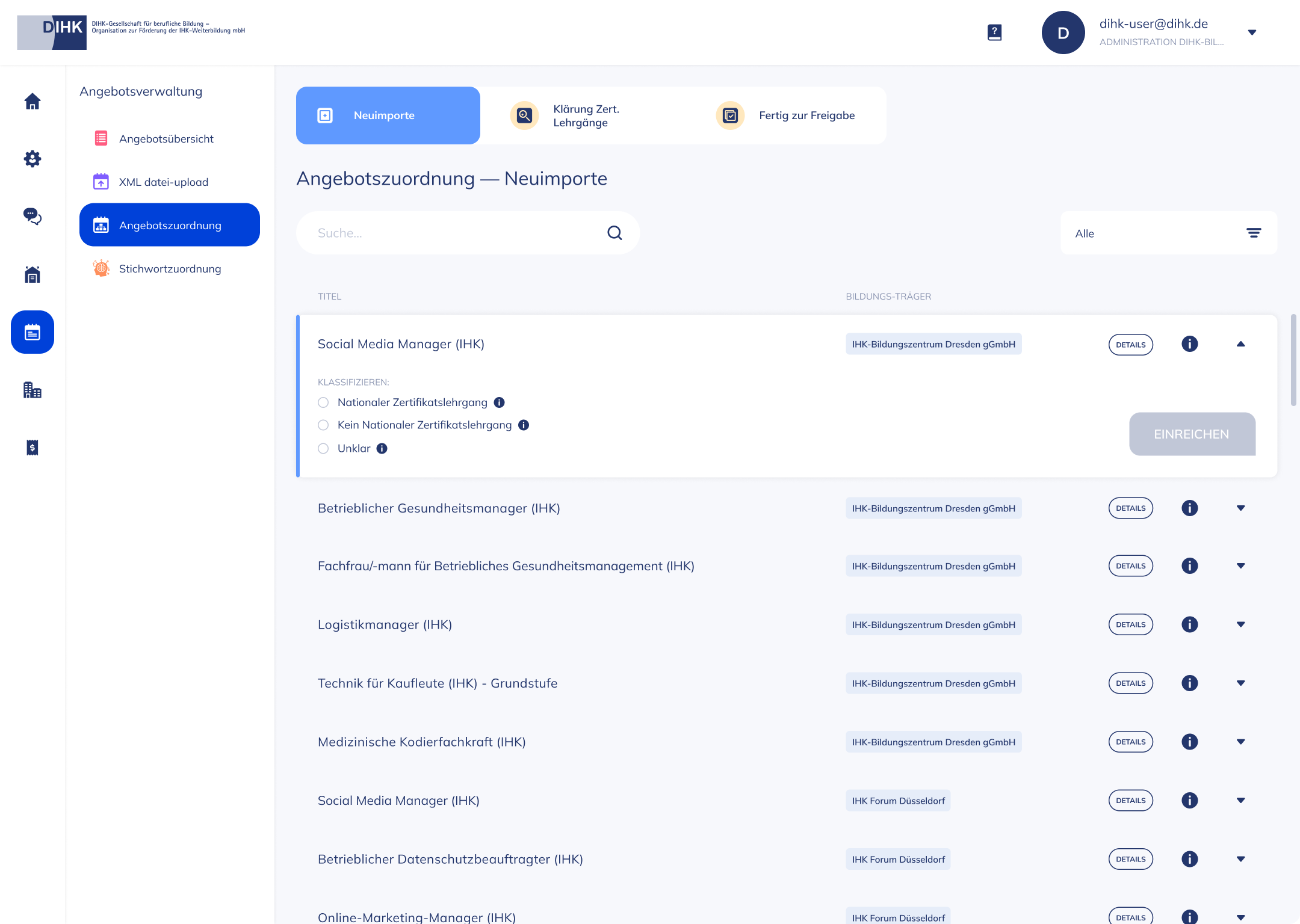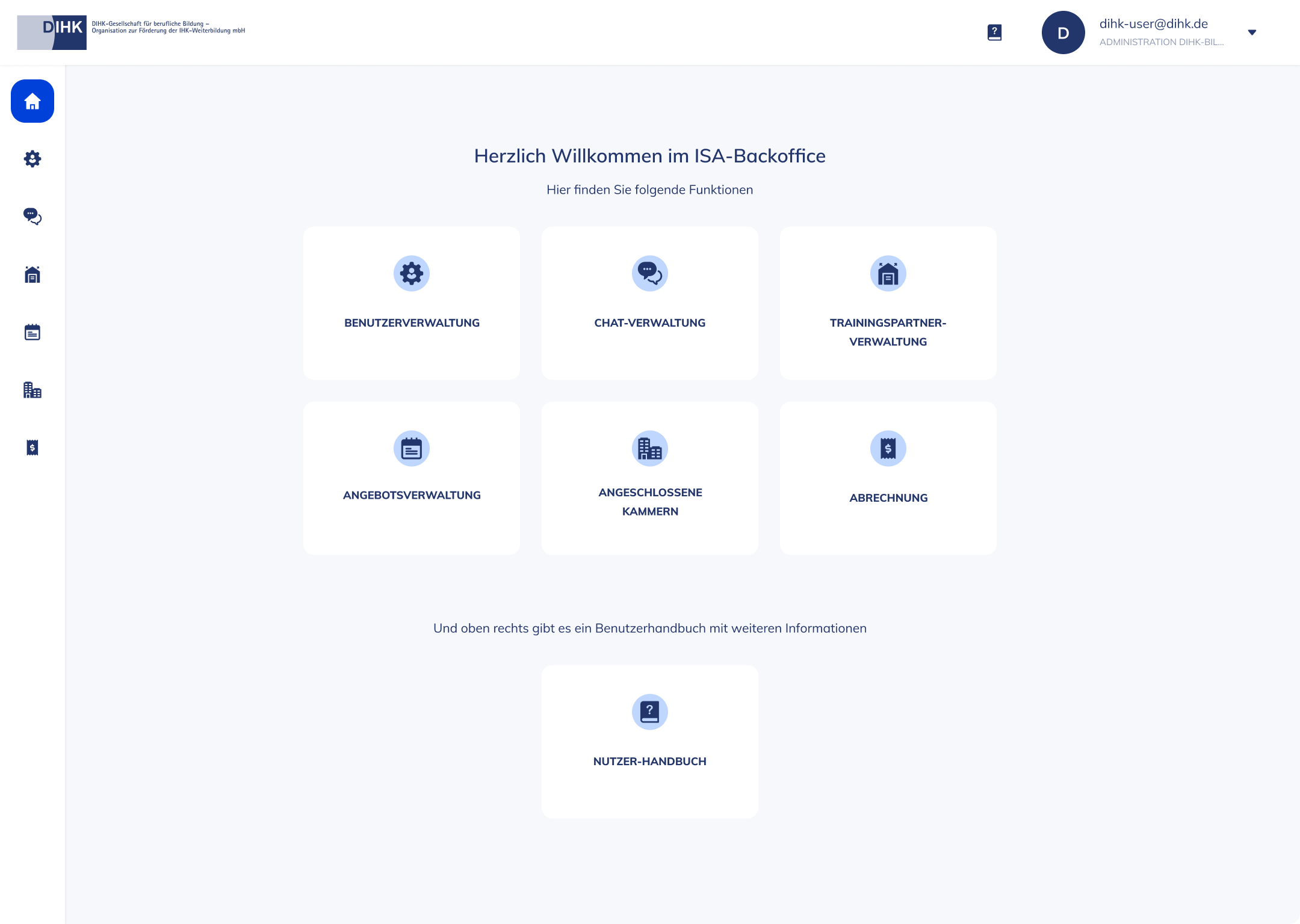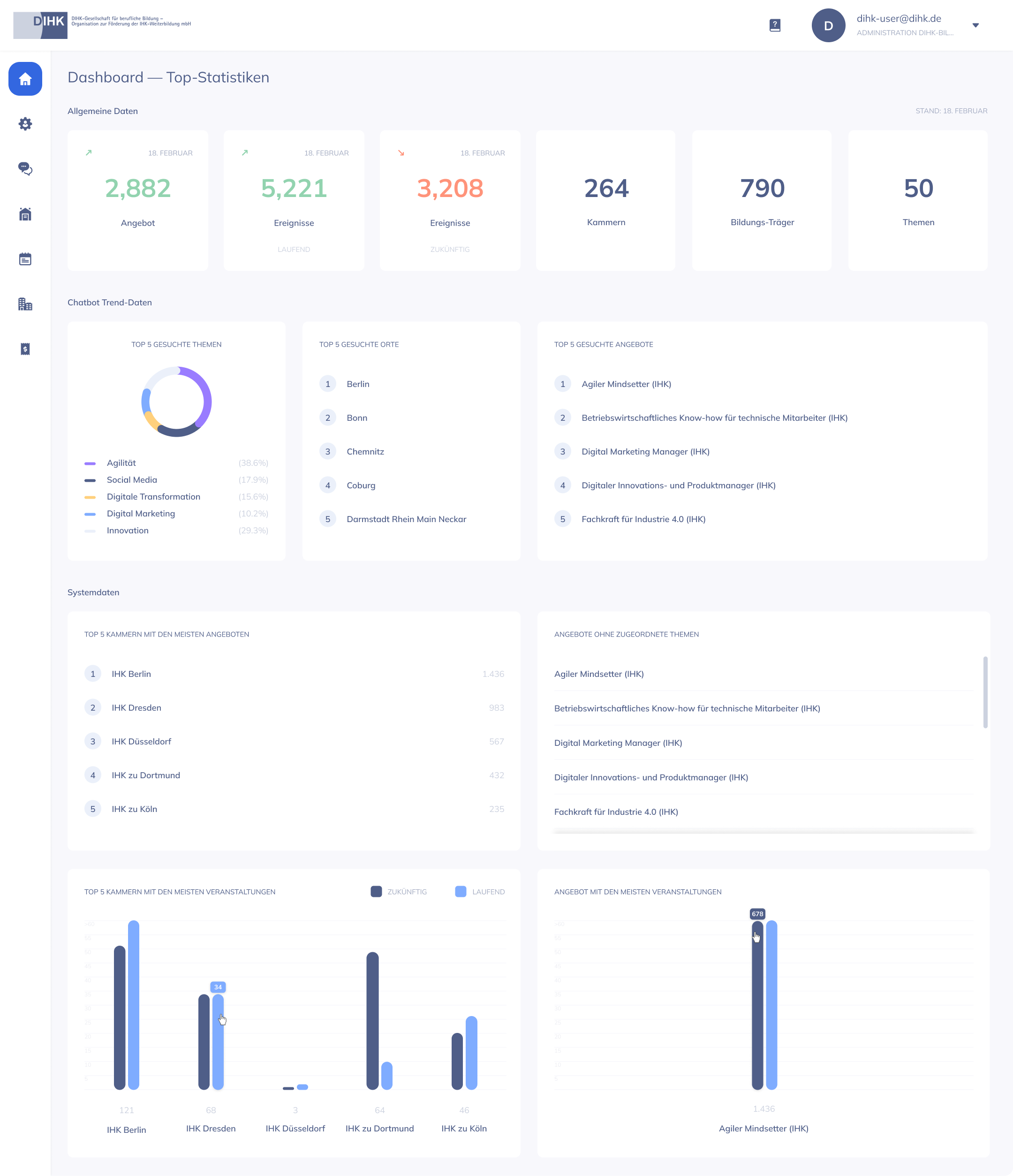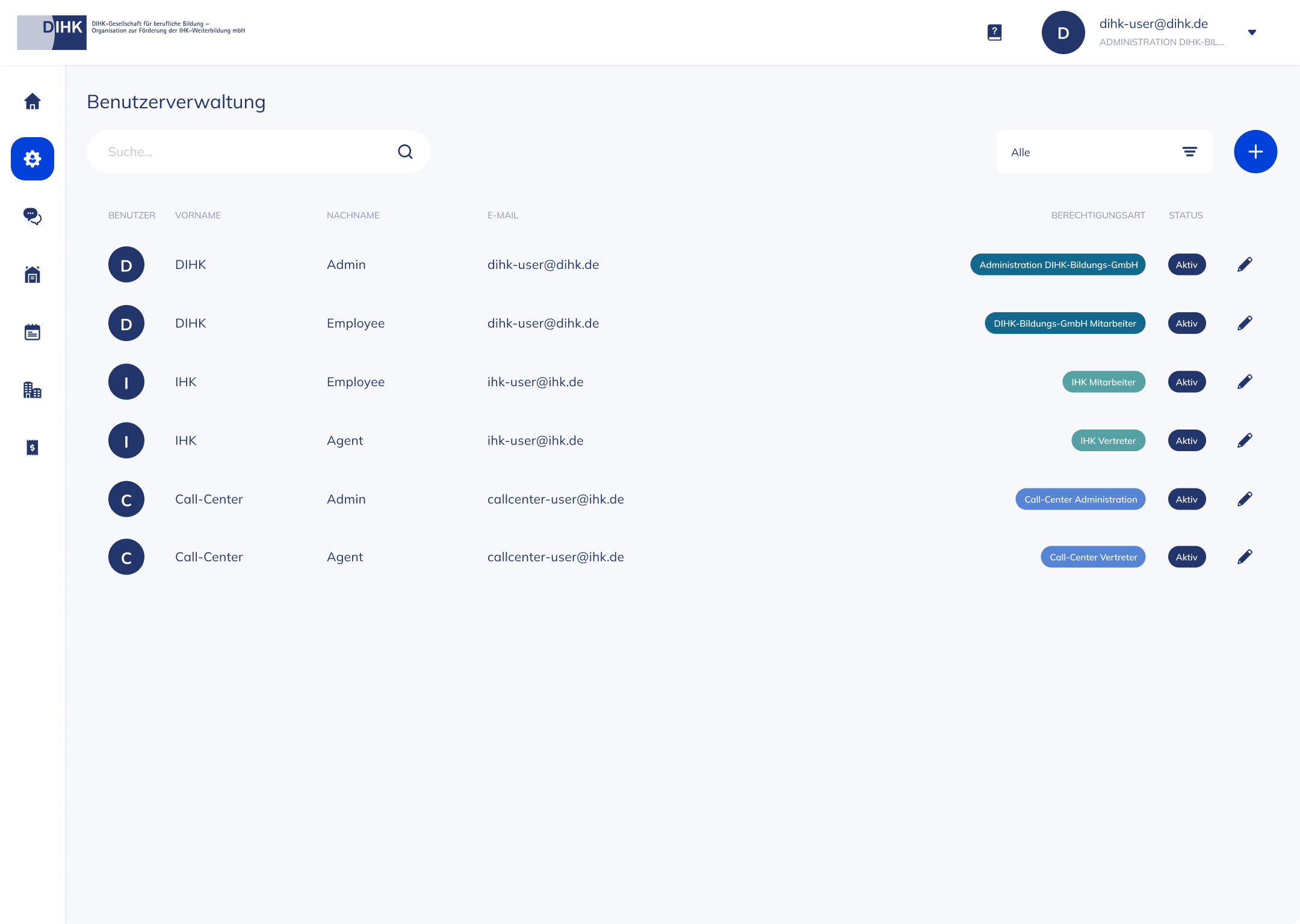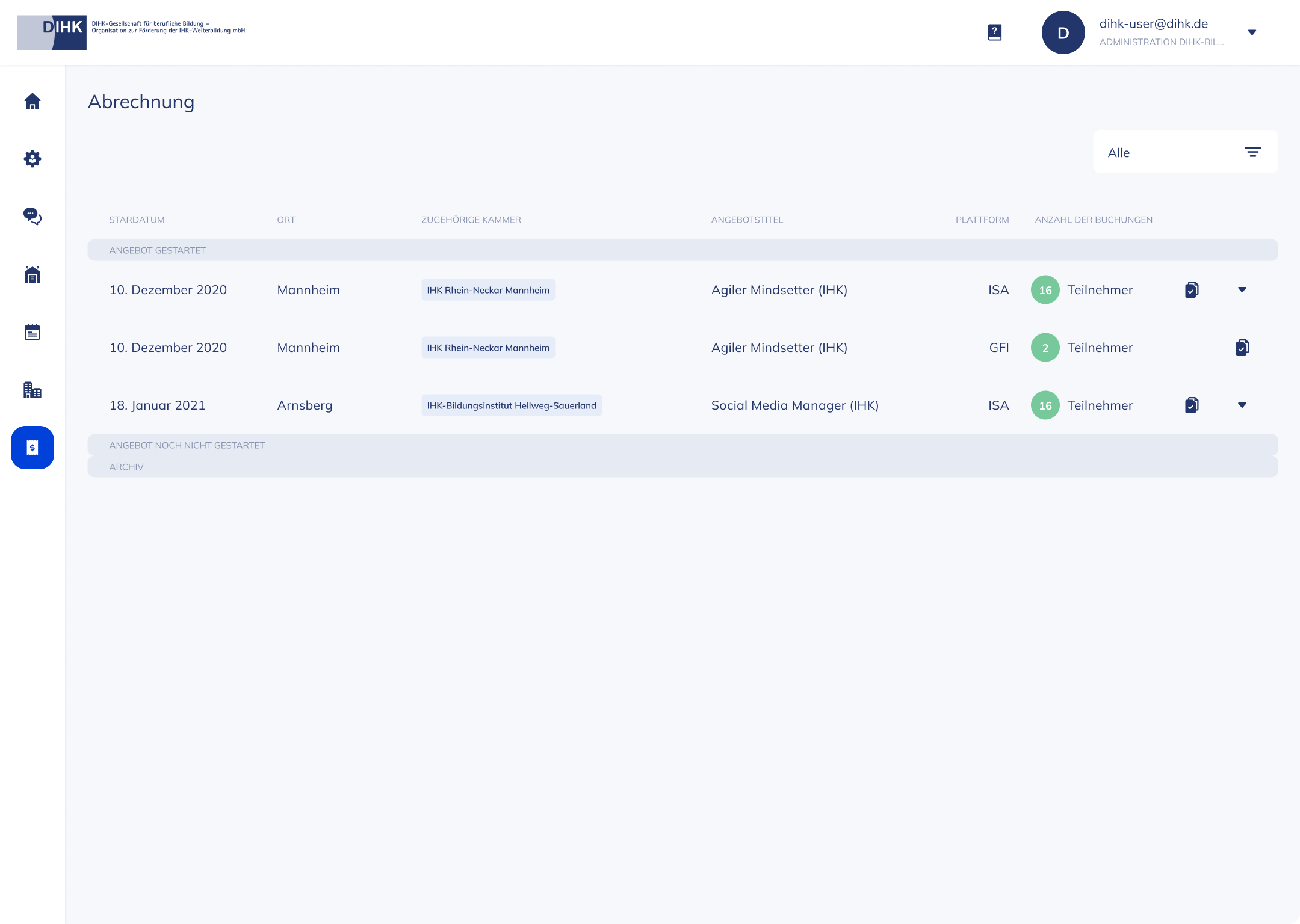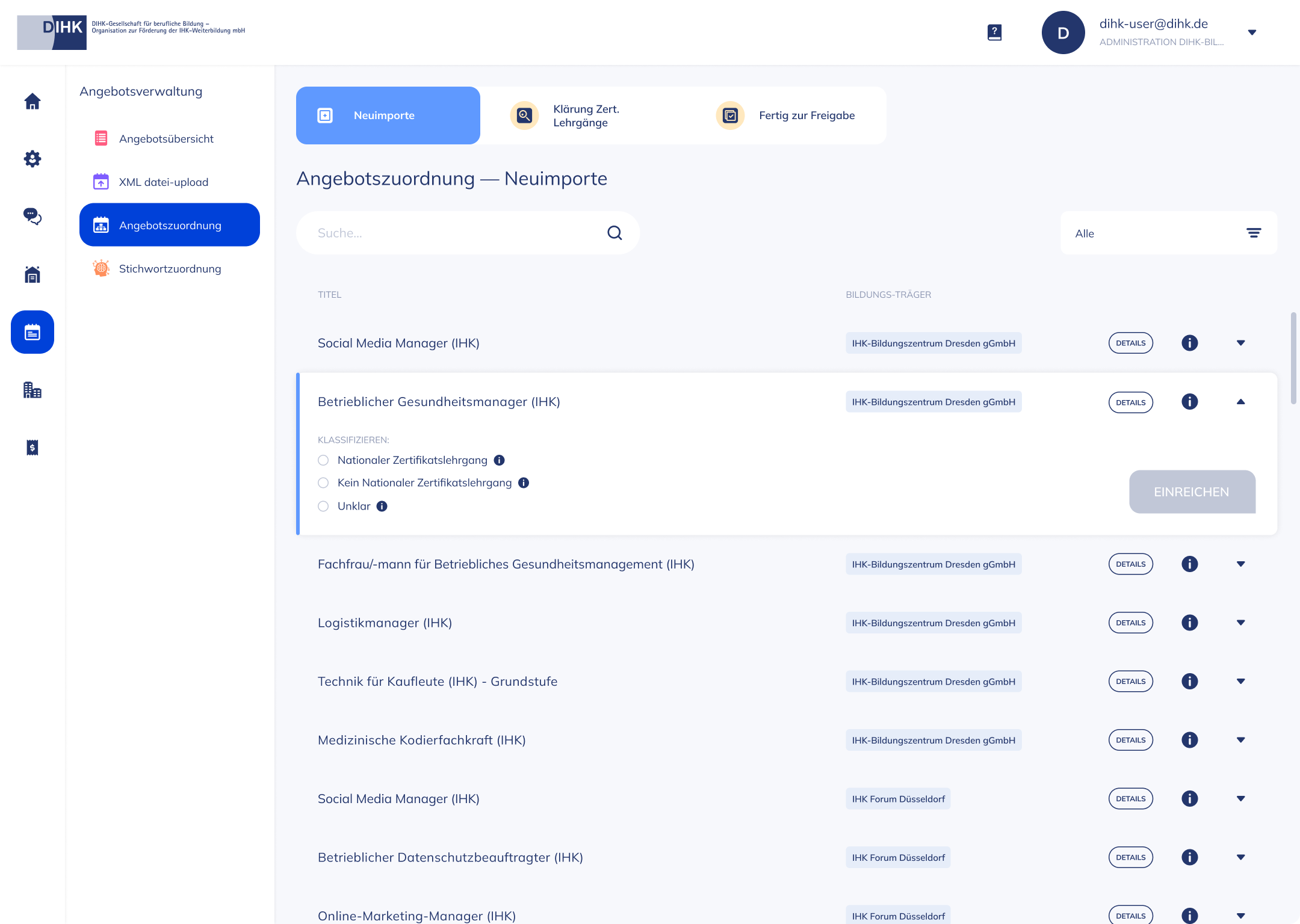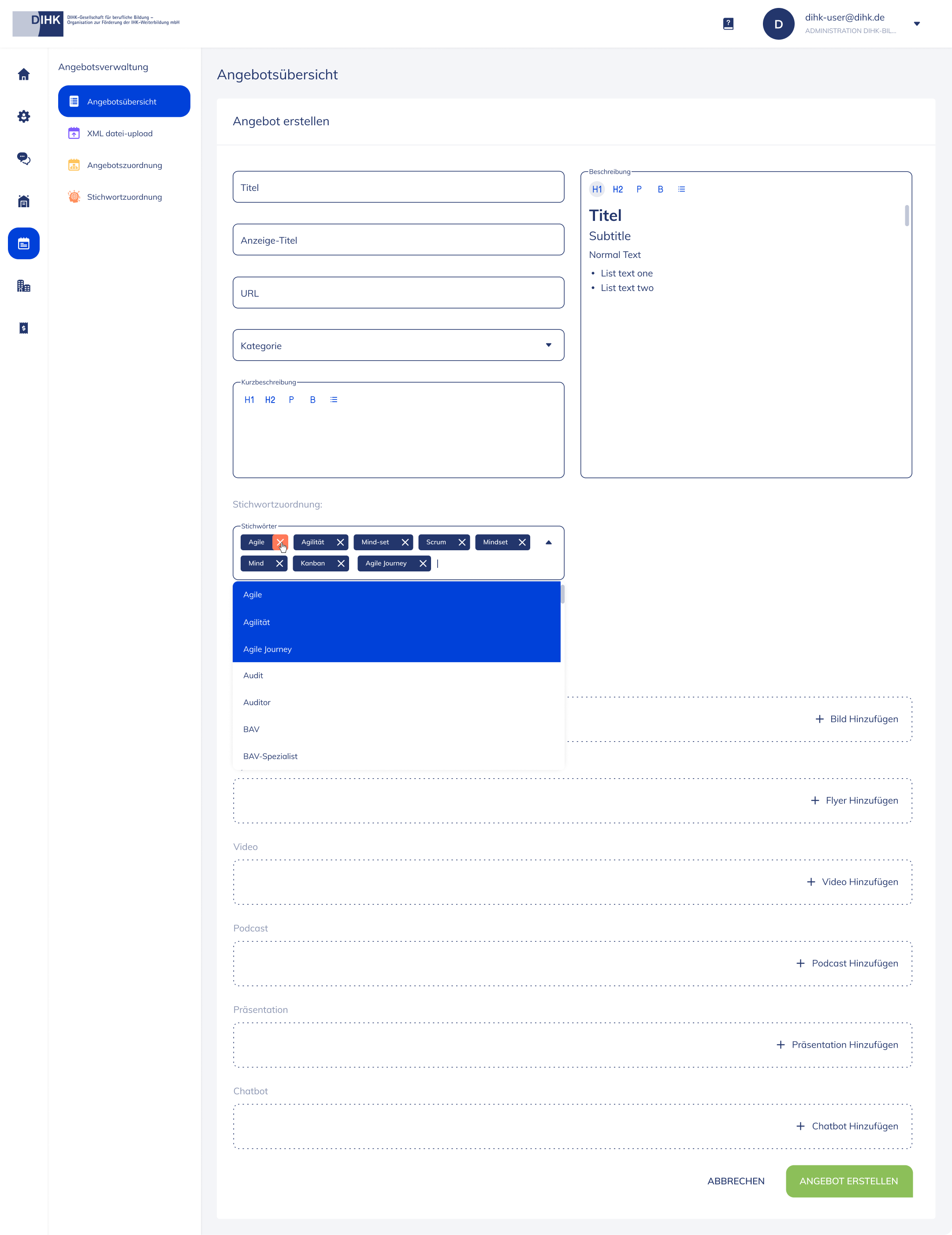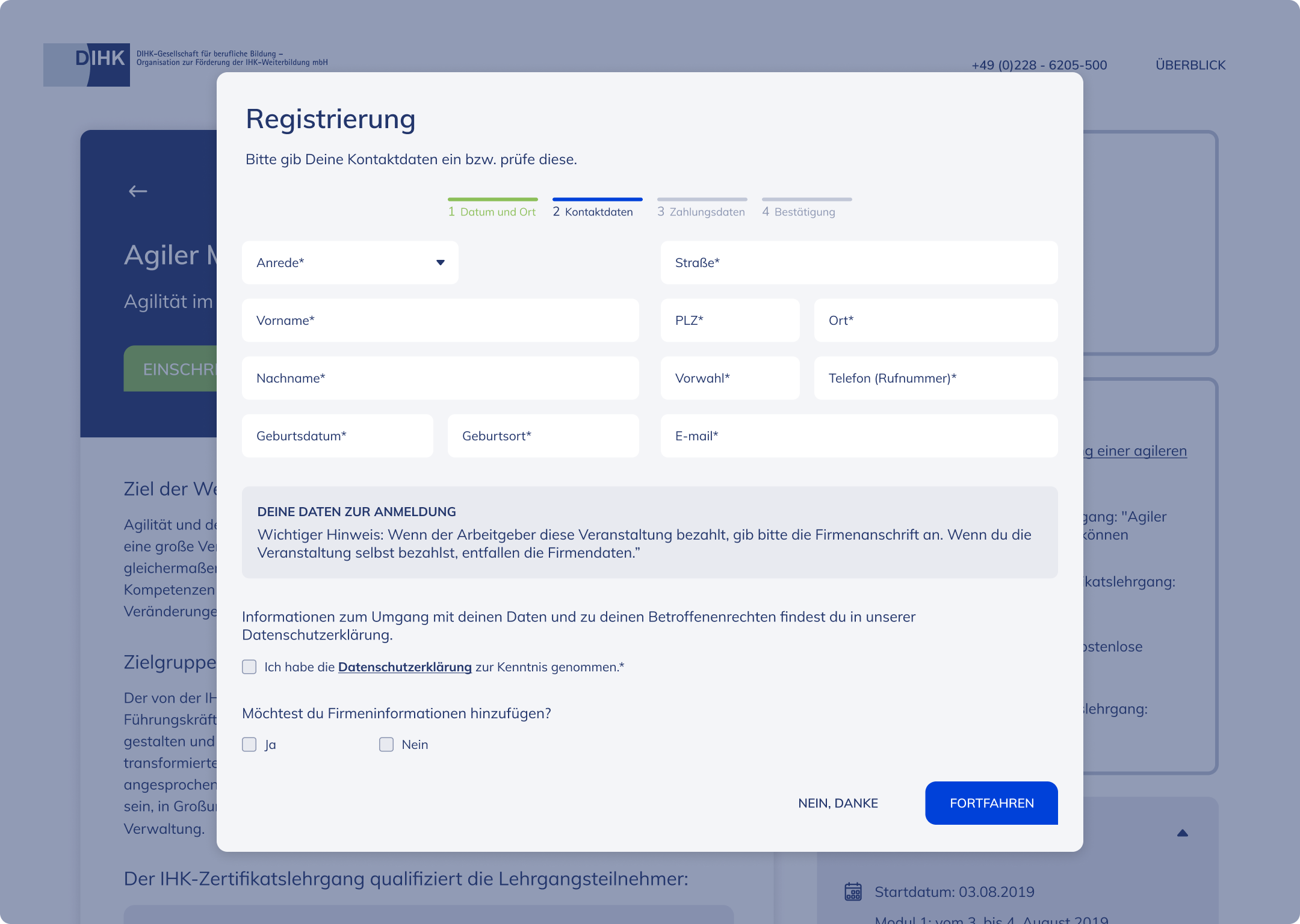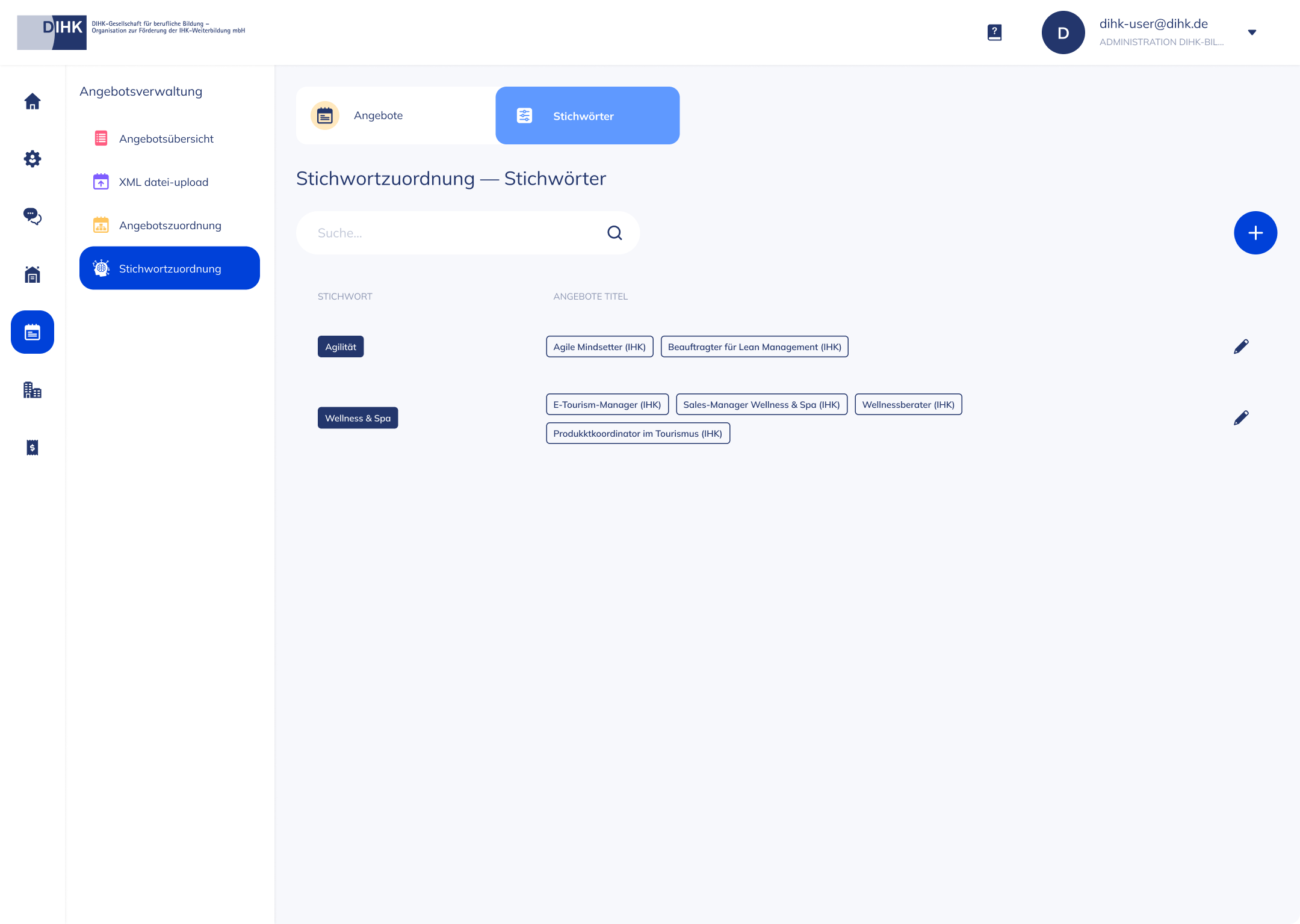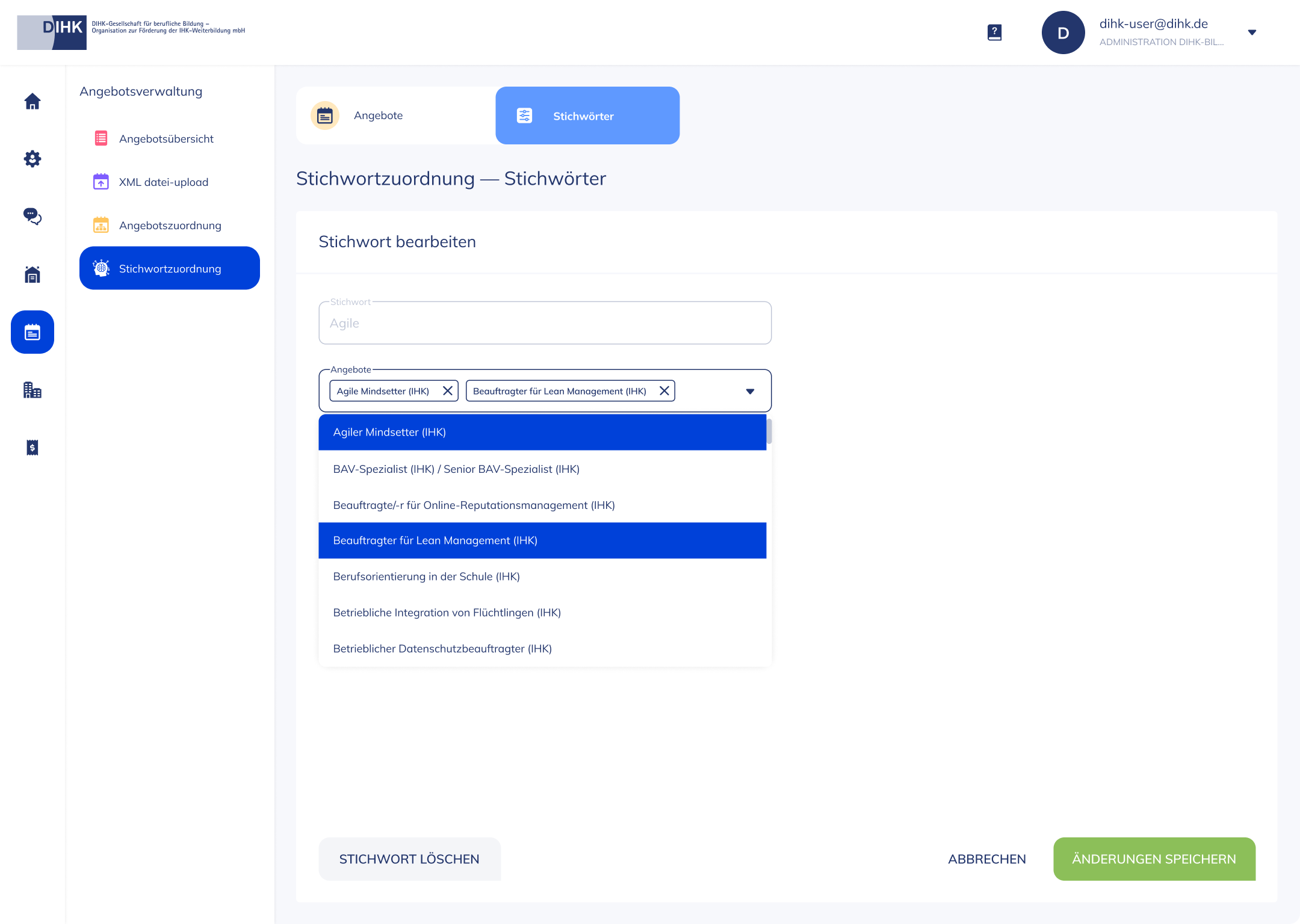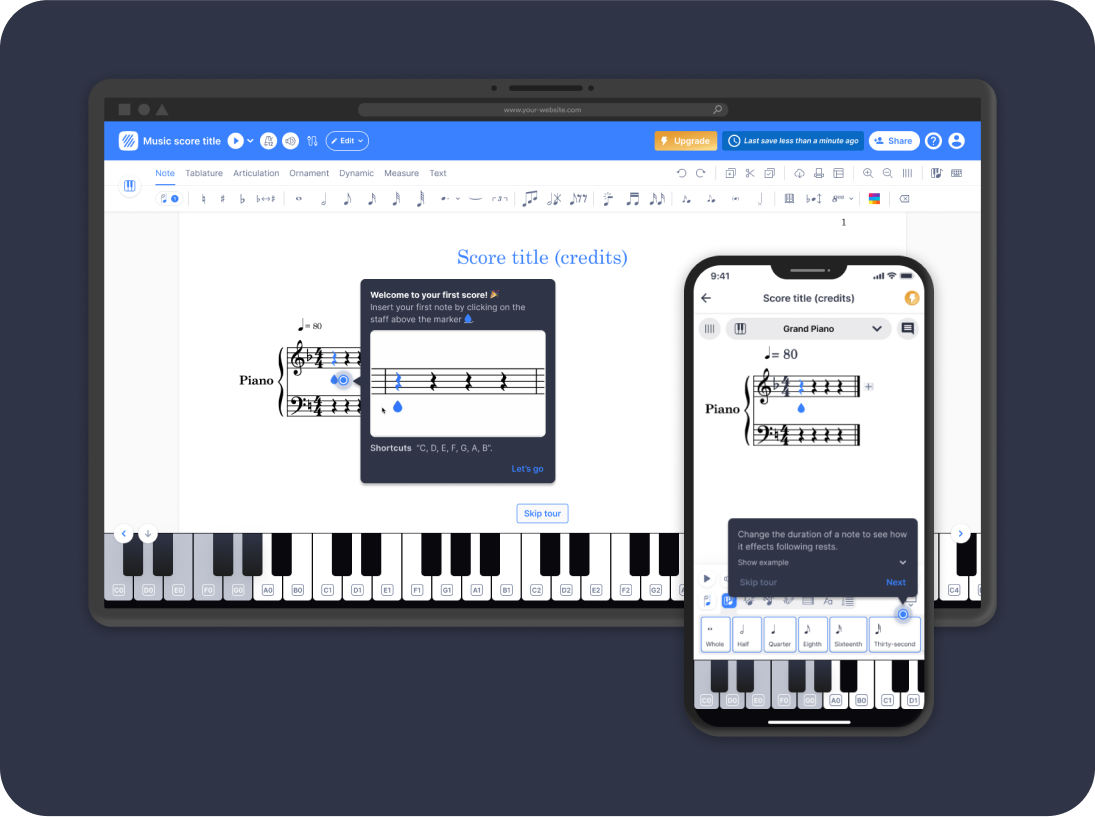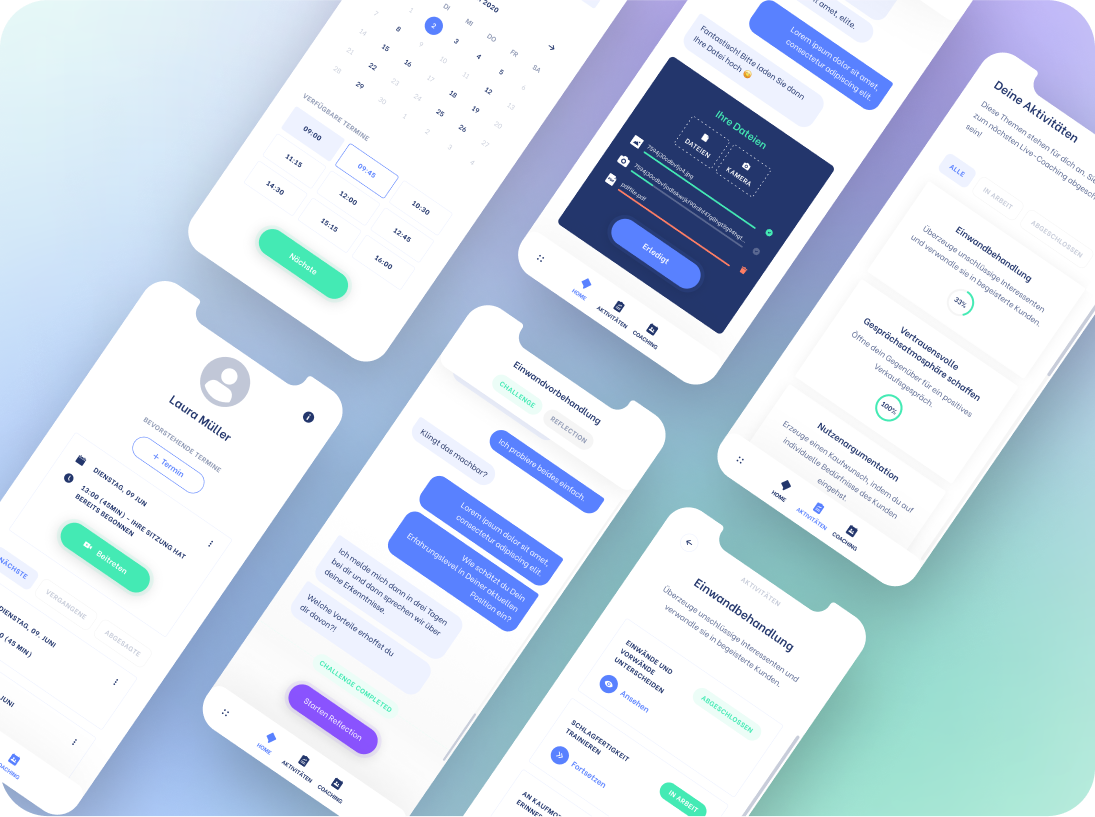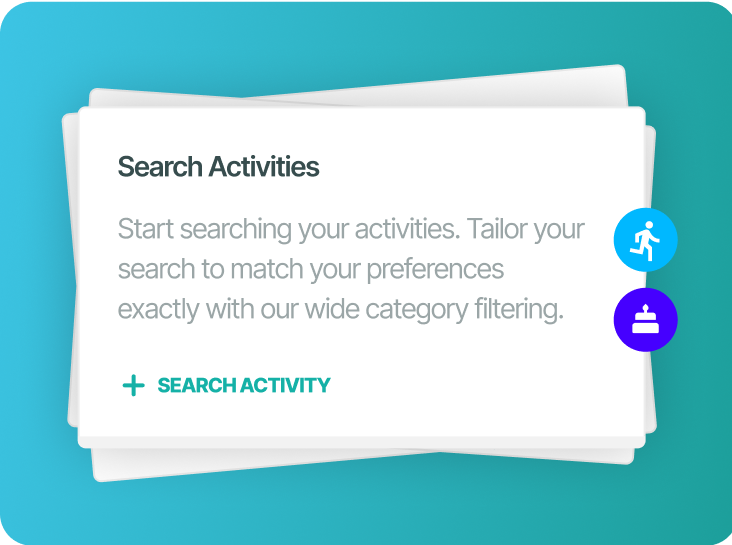DIHK (German Chamber of Commerce) Bot Training Platform & Seminar Offers Landing Page
B2B — WEBSITE & SAAS WEB APP BACK-OFFICE SYSTEM
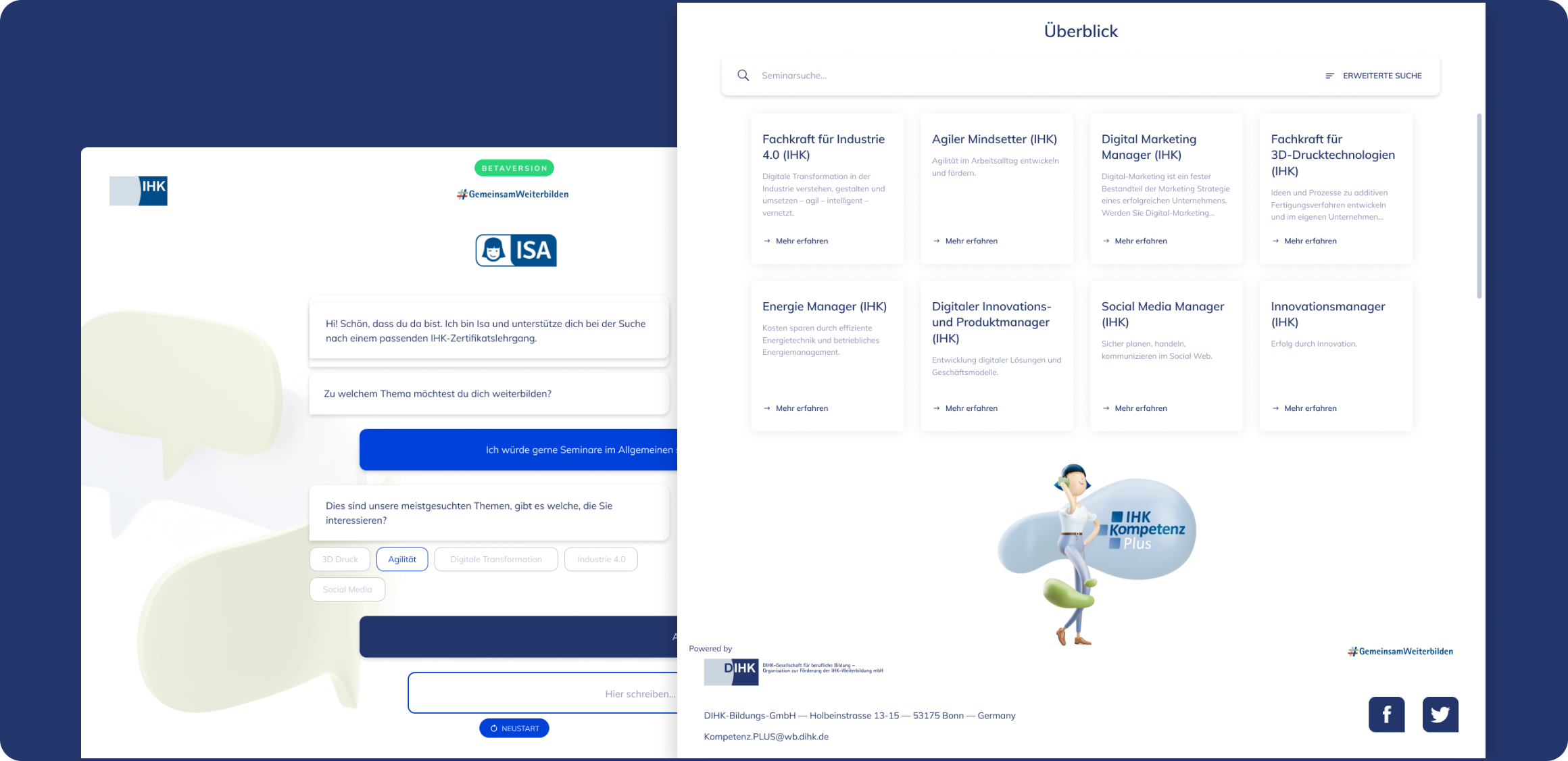
Timeline
Role
Team
1 Project Manager/Data-Scientist, 1 Full-stack Developer, 1 Machine Learning Engineer at AI Coaching GmbH
Overview
The project: create a single and unified platform for all digitised certified nationwide and non-nationwide seminars offered by a chamber of commerce entity through two main drivers.
- Innovation: through some sort of artificial intelligence;
- and Performance: provide all the necessary information related to these seminars in the system as well as a the booking management.
For the innovation aspect, we developed a chatbot search interface as an artificial intelligence component, which required the implementation of the Bot Training Management feature, to enable the training and optimising of the chatbot models search interface results.
Initial Hypothesis
Users will search ffor the main keyword of the seminar they are looking for
In an initial phase, the main hypothesis was that users would search via a “main keyword” which we categorised as the “main topic” which defined how we built the bot sequence flows.
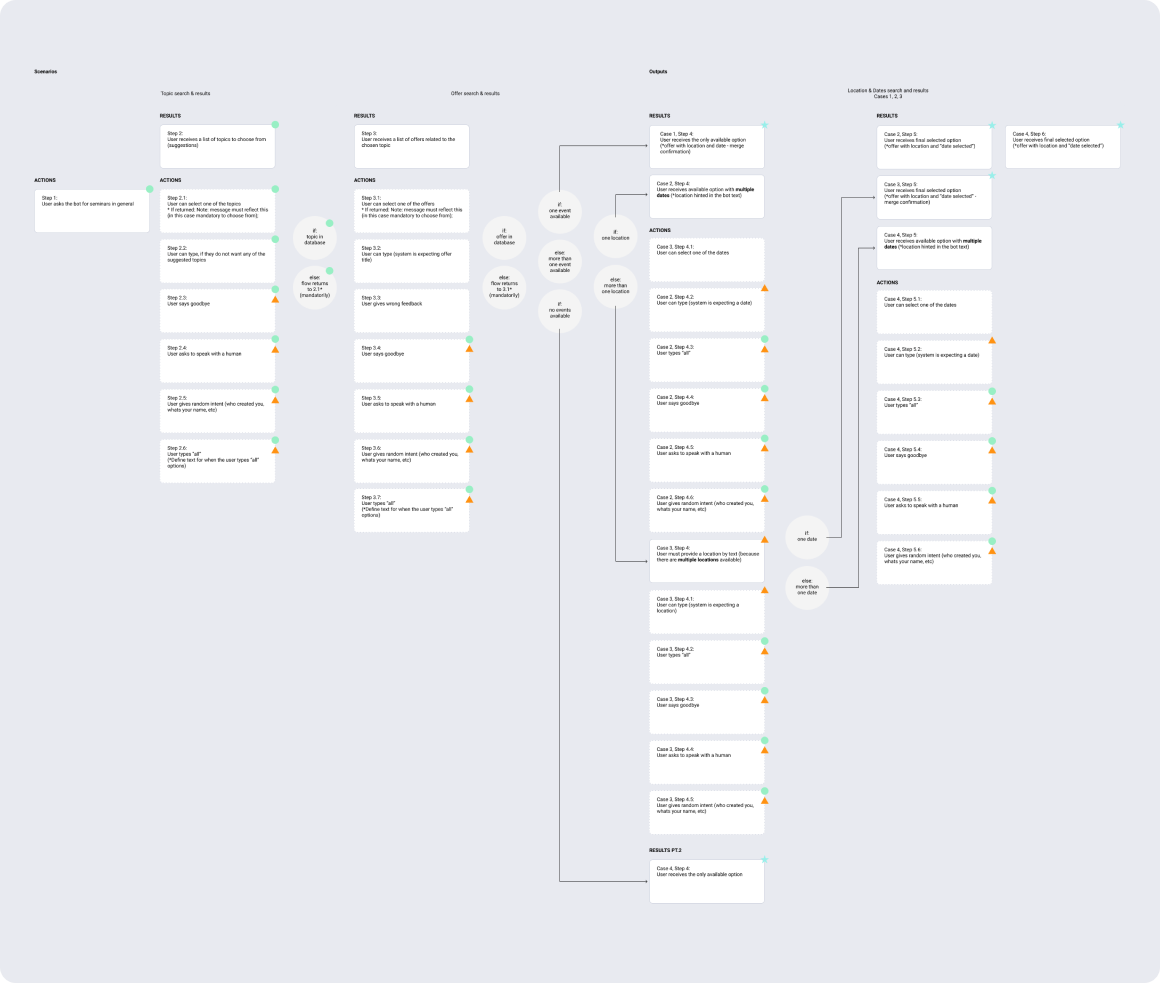
Landing page use-case scenarios study
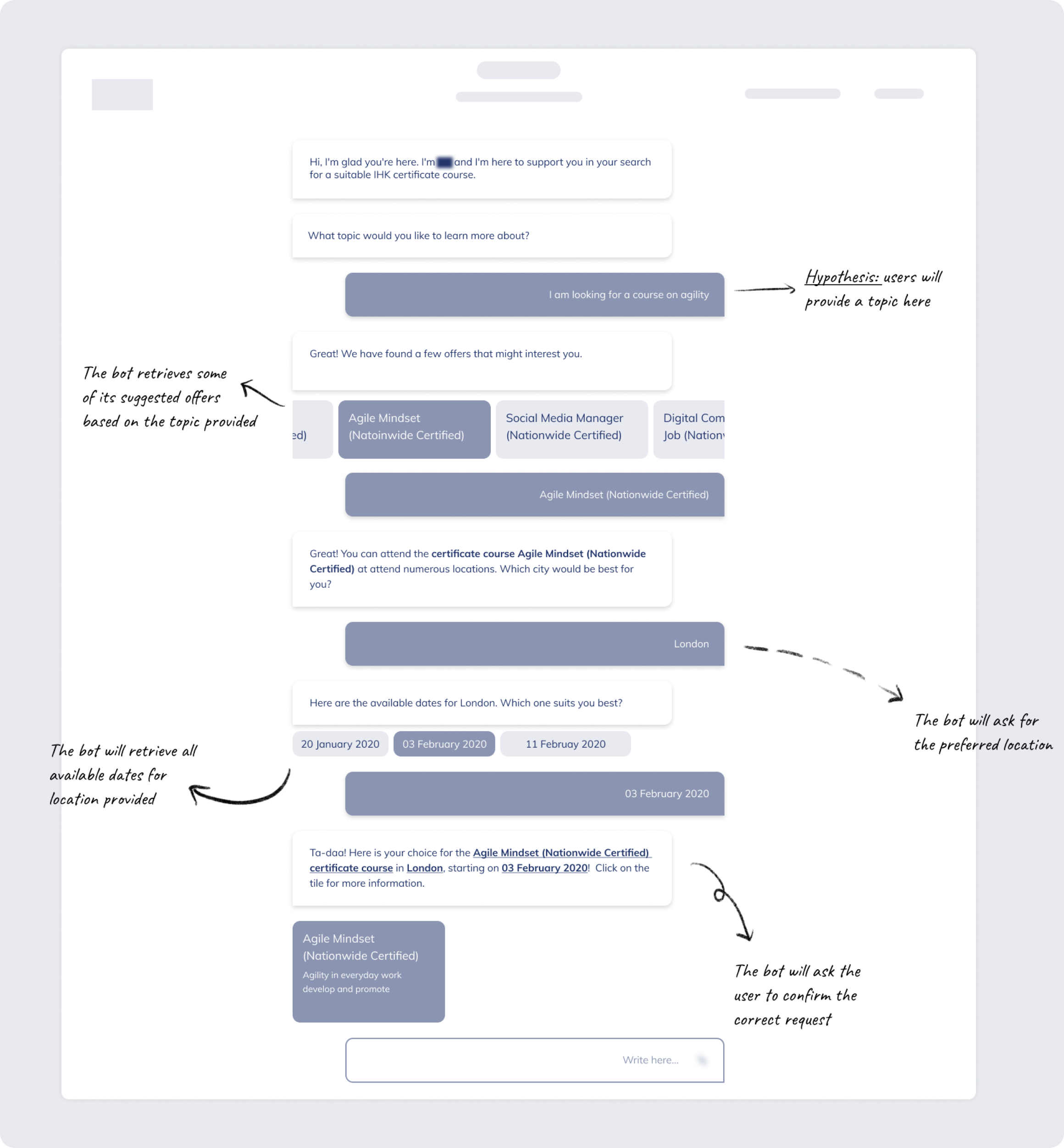
Landing page low-fidelity mockup
A little over a year later with the chatbot feature being continuously improved under a Beta Testing Version for a year, me and the team finally received some important feedback on users insights towards the chatbot sequences which directly affected the bot training feature in the back-office as well.
The main issue identified in the chatbot was:
- unrelated suggested results based on the users keywords input requests;
Whereas, the issues found in the bot training feature were:
- uncertainty as to what keyword should be assigned as “main topic” and which could just be classified as “subtopics”;
- confusion and frustration towards the restriction on assigning one “main topic” keyword.
Feedback Insights
“Either when searching for specific or more general offers, the bot sometimes retrieves unrelated offers to the specific users keywords request”
“It feels confusing what should be the main keyword assigned to “topic” and other keywords assigned to “subtopics” for an offer, when trying to optimise the search results of the bot through the Bot Training Management feature in the back-office”
“Why is it not possible to assign more than one keyword to a “topic” to optimise the bot retrieved results?”
Problem Statement
From the insights and information gathered, what we concluded was that the employees responsible for the tagging of offers in the back-office bot training management, felt frustrated and confused by the current system at the time for multiple reasons, but the main one being — because we had created a chatbot model which required the user to provide information with a certain sequence (e.g. topic, date, location).
Through this sequence, we ended up restricting the user to always have to provide a “topic” keyword, which if not found or unrelated, would result in the process of failing at retrieving similar offer options when the specific keyword was not associated with multiple offers in the system.
Challenge
How might we… improve the systems training model in order to provide a simpler, less restricted and results oriented experience?
Concept Iteration
Together with the rest of the team, we started by creating a document in which we defined which functionalities were not working and how we could improve the model.
Throughout this process, one thing we all agreed on that became very clear was that there was no real benefit (neither for the employees using the back-office system, or the users searching for offers in the chatbot) in the categorisation of keywords by “topic” and “subtopics”, so instead, we decided:
- we would no longer support the “topic” entity, by removing it from the systems model;
- and sub levels of keywords would also no longer exist, therefore instead we would convert “topic” and “subtopic” keywords into general keywords.
Then we started by defining the new logic for this improved and optimised version of the bot training management system, the main goal being that every offer would now just have a set of keywords associated to it. The advantage of this system:
- making the bot faster;
- removing the limitation of assigning a single keyword (topic) to a selected group of offers;
- allowing keywords allocation optional;
- easier to identify offers with no associated keywords.
User-flows / Use-case Scenarios / Wireframes
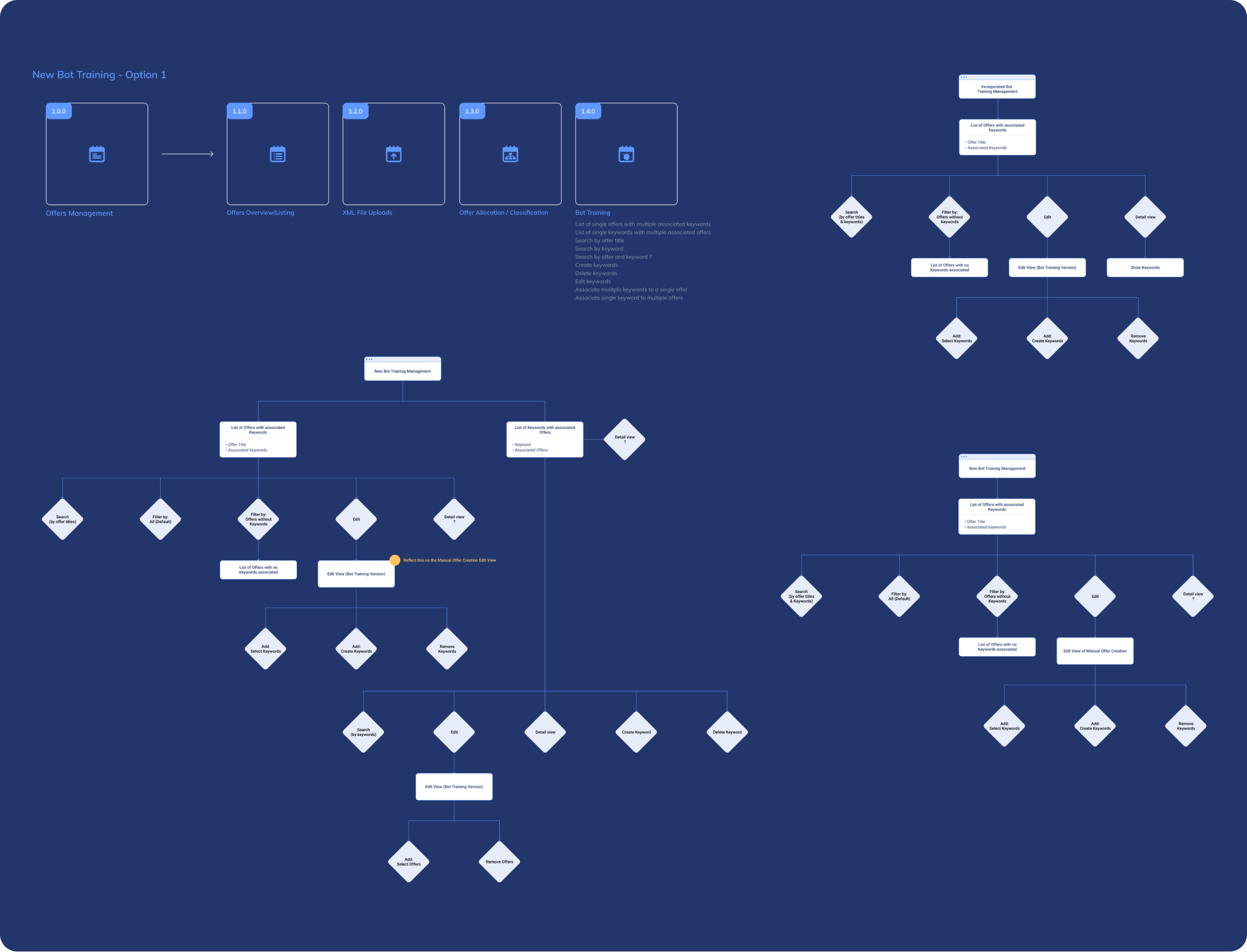
Back-office User flow map of the redesign of the flow to simplify the process
Based on this new user flow roadmap, I quickly sketched some wireframes to help us define the development strategy for the refactoring of the feature, and proceed with the high-fidelity mockups redesign.
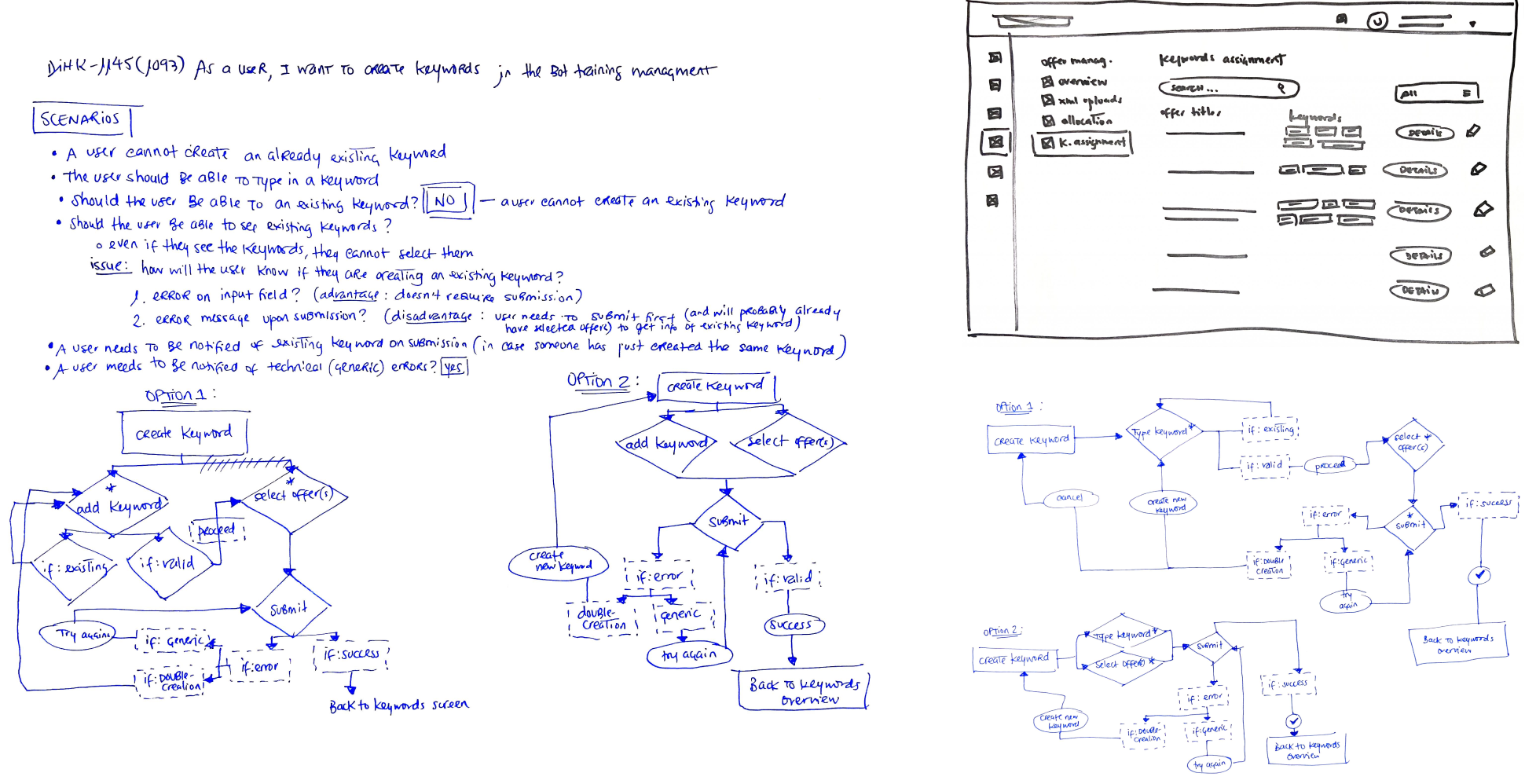

Design Iterations
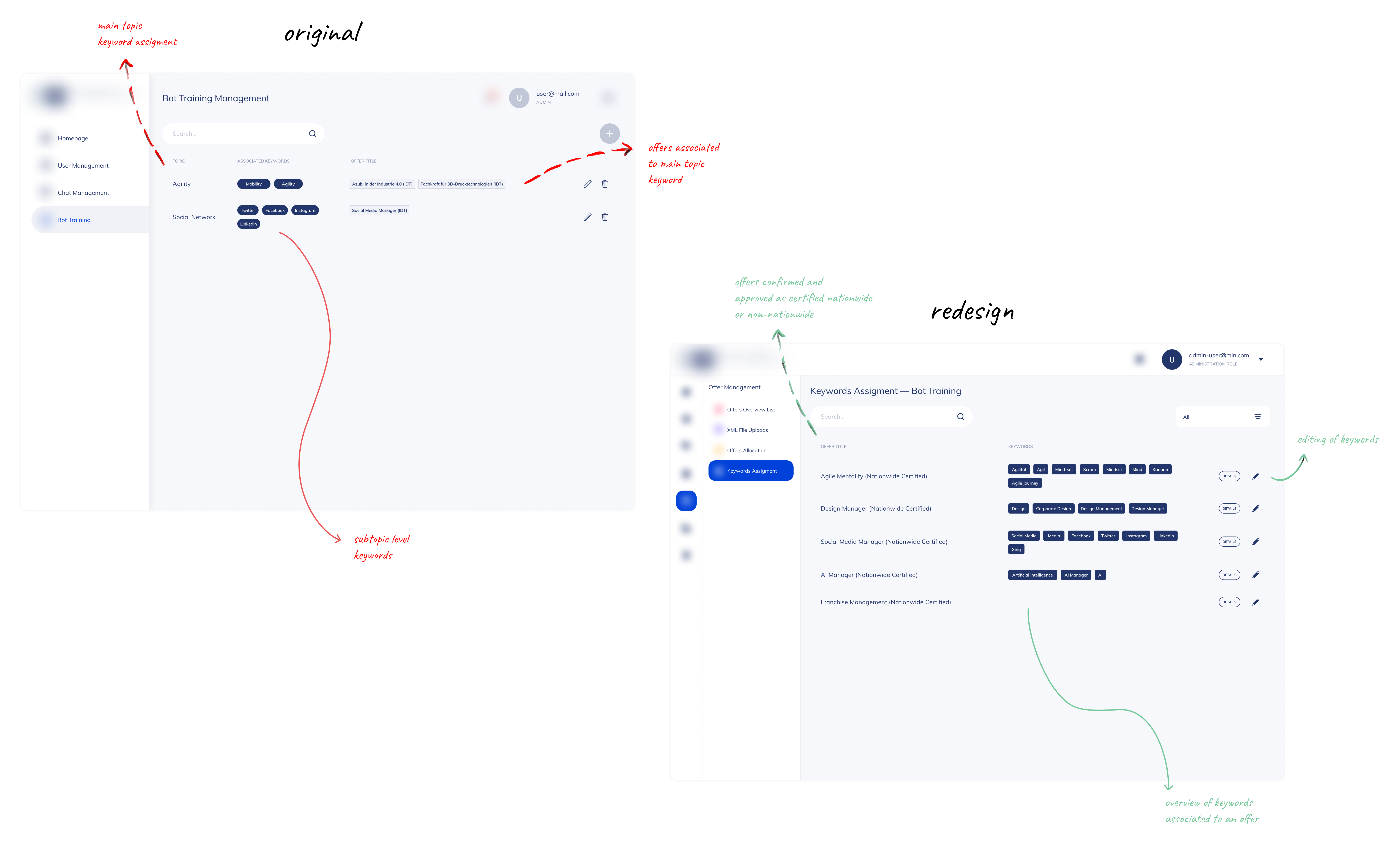
Stats Insights
There are currently over 80+ Legal Entities sending their offers to the system.
The system stores 2.800+ offers, provided by the 80+ Legal Entities suppliers.
Final Outcome
Learning Take-aways
Some designs of the other really cool features I’ve created for this project.
Feel free to ask questions!

Mais Amor Por favor

